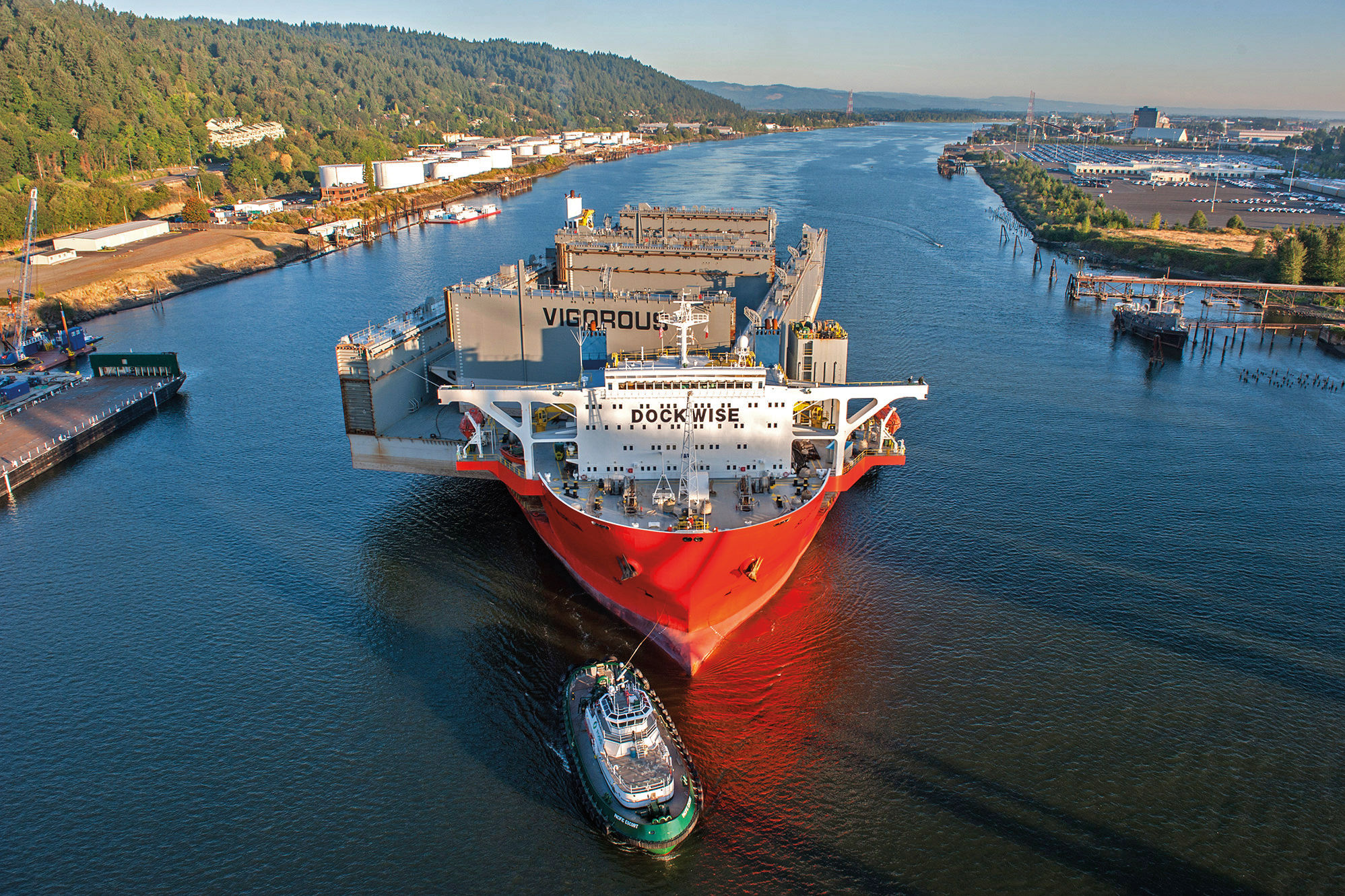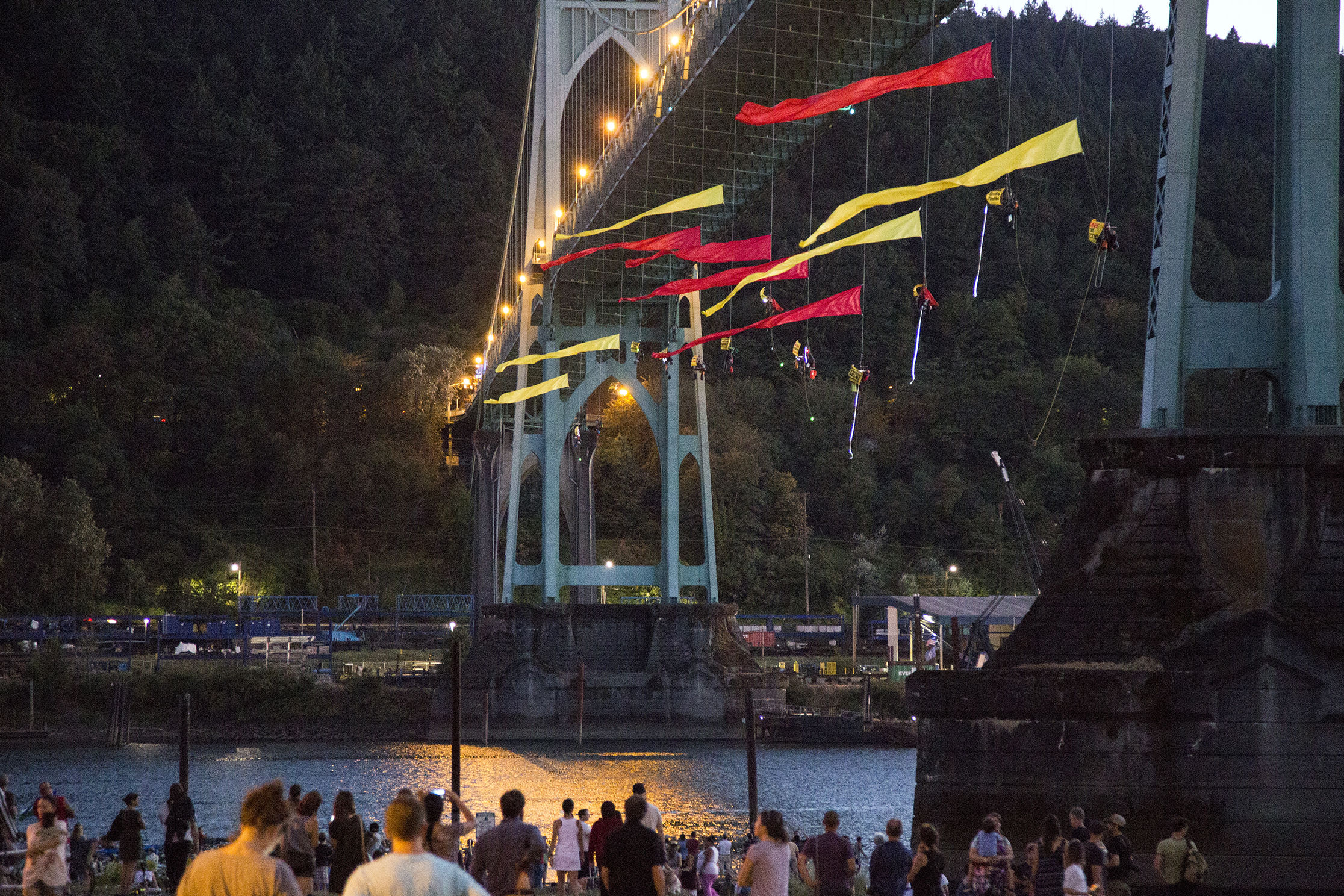
Remembering the #ShellNo Protest 5 Years Later
Around 2 a.m. Wednesday, July 29, 2015, John Sellers witnessed the sudden appearance of “a constellation of low-hanging stars” which appeared to be dancing above the Willamette River. The “stars” were in fact headlamps belonging to 13 Greenpeace climbers who rappelled from Portland’s iconic St. Johns Bridge, creating an aerial blockade across the bridge’s 1,207-foot-long central span. I was on the bridge.
Just days before, I had received a call asking if I could step away for a few days to be trained for and participate in a mysterious action that was being planned for later that week. I had been working on the Save the Arctic campaign against offshore drilling as the local canvassing director for Greenpeace USA in Portland. My quick training was to serve as anchor support for Oakland-based Greenpeace employee Georgia Faye Hirsty, a.k.a. “Climber Six.” My primary responsibilities were to drop a second rope holding stuff sacks full of Hirsty’s supplies and to relay the tagline that would connect the 13 climbers to each other, effectively creating a human drawbridge. I would also pass water and food down to her (passersby on the bridge, which remained open to traffic, dropped off morale-boosting burritos and other treats) and collect urine bottles and garbage. Nothing went in the river.

I was one of the least experienced climbers on the bridge, which is why they paired me with Hirsty, one of the most experienced. When I was practicing beforehand, I repeated the action of tying the rope and dropping the bags hundreds of times, but I hadn’t mentally prepared myself for the feeling of lowering the bags in the dark from a 200-foot-high bridge. I had a brief moment of panic thinking I had just dropped all of her stuff in the river and already ruined the action singlehandedly. Luckily, I hadn’t.
The climbers hung 100 feet below the bridge for 40 hours—40 hours that put Portland on the front page of international news. Harmony Lambert, a.k.a. “Climber Nine,” remembers coming to peace with the solitude she felt. “For 40 hours, the closest person to me was 50 feet away. I was using my radio minimally to conserve battery power, and had no cell phone or other connection to the rest of the world,” she says. “Portland was such a big deal locally, nationally, and internationally, but to this day I don’t really have an overall sense of what it was actually like to see it all, because I was disconnected while it happened. I had 40 hours largely to myself, lying on my back, slowly spinning in the wind and looking at the underside of the St. Johns Bridge.”
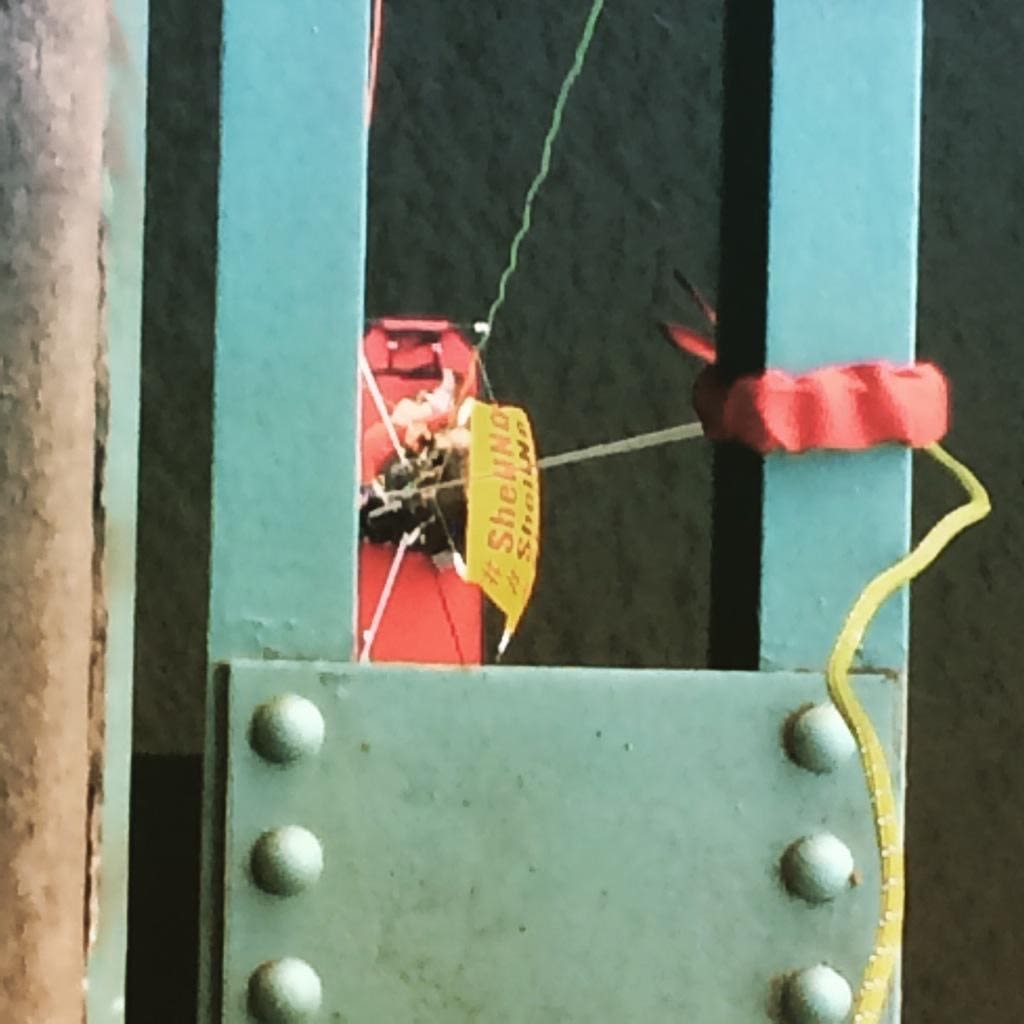
Steve Nichols’s view as support staff on the St. Johns Bridge
Image: Courtesy Steve Nichols
In September 2008, in the waning days of the Bush administration, Royal Dutch Shell had purchased $2.1 billion worth of offshore drilling leases on federally managed waters in the Beaufort and Chukchi Seas, on the outer continental shelf off Alaska’s North Slope. The multinational corporation then faced several years of setbacks, starting with lawsuits filed by environmental groups, Alaska Natives, and others. In 2010, the Obama administration announced a six-month moratorium on all offshore drilling as it assessed federal safety standards following the Deepwater Horizon disaster, which underscored the serious risks inherent to offshore drilling.
Shell was given the green light to begin exploratory drilling in summer 2012, but things went wrong fast. One of Shell’s drilling rigs, the Noble Discoverer, was beset by gale force winds and dangerous ice floes, and then caught fire and had to be towed to shore. Later that summer another rig, the Kulluk, became unmoored by the turbulent waters of the Arctic, and its crew had to be rescued by helicopter before the rig eventually ran aground on Alaska’s rocky coastline.
In addition to serious concerns about oil spills sullying the fragile ecosystem, Arctic drilling became a flashpoint for many environmentalists, including myself, in challenging governmental and corporate neglect of the existential threat of climate change. At the heart was a perverse irony: Arctic drilling had only recently been made possible due to the rapid thinning of Arctic ice. This allowed for the extraction and combustion of deep sea oil that would, in turn, further exacerbate global warming, leading to increased polar melting.
It was against that backdrop that Shell attempted exploratory drilling in the Chukchi Sea in 2015, after receiving a controversial go-ahead from President Obama’s Interior Department. The Arctic drilling season is limited to just a few months in the summer, when the polar ice is thin enough to allow access, and any time lost to delays would narrow the window even more.
In April 2015, six climbers associated with Greenpeace—a group long known for its attention-grabbing direct-action maneuvers—boarded one of Shell’s offshore rigs, the Polar Pioneer, and spent six days on board as it traversed the Pacific from Asia to the US. The rig eventually arrived in the Port of Seattle, where Shell often prepared its vessels for the trip north. This time, it was greeted by hundreds of “kayaktivists” and Coast Salish canoe families, who showed up en masse to protest Shell’s presence and its impending drilling plans.
As Sellers, founder of activist groups Mosquito Fleet and the Other 98%, remembers, “It was amazing. Native youth went right up to the Polar Pioneer and put their hands on it. And there were no repercussions from law enforcement because they were overwhelmed by thousands of people who showed up at the port, on the docks and on the water.” The protesters even had a barge powered by a 10,000-watt solar array, which they dubbed the Solar Pioneer. The Polar Pioneer would slip out in the early-morning hours of Monday, June 15, with the US Coast Guard helping keep protesters out of the way. As Sellers recalls, “When they escaped us in Seattle, it was really demoralizing.”
“But,” he adds, “when they punched a hole in their icebreaker, we felt like we were given a second chance.”
The “hole” was a three-foot-wide gash in the hull of the MSV Fennica, a Finnish-flagged icebreaker-class offshore support vessel leased by Shell. On July 2, 2015, it ran aground in the Aleutian Islands, the latest victim of Alaska’s inhospitable waters. The Fennica was a particularly important member of the fleet because it carried the capping stack, a critical piece of safety equipment required by law for all offshore drilling operations following the Deepwater Horizon disaster. Without the capping stack on-site, Shell would be forced to cease all drilling activity until it arrived. It just so happened the closest facility large enough to repair the Fennica was the Vigorous drydock at the Vigor Industrial shipyard on the Willamette River in North Portland.
When word got out the Fennica was headed to Portland, Sellers headed down from Seattle with a cohort of kayaktivists, where he was joined by committed activists from local groups, such as Portland Rising Tide and 350PDX.
That’s how he came to be standing watch that early Wednesday morning, in case the Fennica tried to slip through in the dead of night, when he saw the 13 climbers spin down from the bridge.
On the bridge, it took only seconds for police to arrive. A former Greenpeace action coordinator (who asked to speak anonymously because his work tends to end up as the subject of legal action) would later learn a motorcyclist stopped at the police building in St. Johns at the bridge’s east end to report “people jumping off the bridge.” While the police tried to make sense of the situation, we settled in for what we hoped was the long haul, knowing the longer we were up there, the shorter Shell’s drilling window would be. After about four hours, dawn was breaking and I looked down at Cathedral Park, which was starting to fill up with people.
There are other bridges between the Pacific and the Vigor facility—Astoria-Megler, the Lewis and Clark Bridge between Longview and Rainier, and the Burlington Northern railroad bridge just a mile upriver—but St. Johns was a clear choice for the blockade. “It was way more powerful than the other bridges we looked at in terms of location and having access to a public park,” the action coordinator remembers. “If people are down, if they support this, we’re giving them an opportunity to participate.”
Sellers, the kayaktivists, and more traditional activist types were soon joined by journalists, artists, families, and other curious locals who flocked to the waterfront to take in the spectacle. Local artist Quin Sweetman remembers hearing murmurs of a protest shortly after waking up. Despite not being a morning person and having a busy day ahead of her, she thought to herself, “I need to go down there—it’s my neighborhood, darn it.” So she loaded her painting gear into her car and headed over to the park. “I was trying to avoid people and stay out of the way, and just trying to observe and paint, but then it turned into this big party with people coming down to show support and bringing picnics with them.” The atmosphere was captured in her painting Artful Activism, the red and yellow depicting the banners blowing in the wind, themselves a deliberate “brandjacking” of Shell’s signature colors.
The Portland Police Bureau had patrol cars on both ends of the bridge and officers occasionally patrolling the deck on foot. But they remained conspicuously hands-off and seemed to be under orders to let the protest play out, at least for the time being.
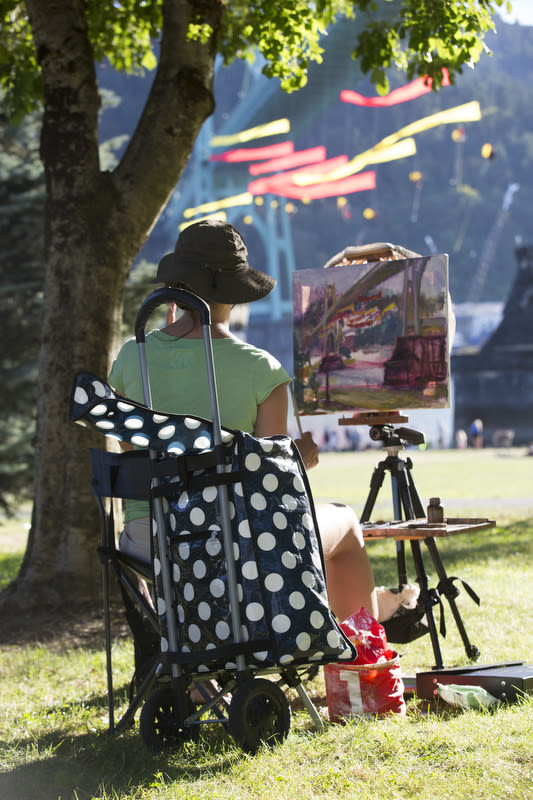
Painter Quin Sweetman at work in Cathedral Park
Just two weeks earlier, following the protests in Seattle and increasing public support for a total ban on Arctic drilling, Jeff Merkley, Oregon’s junior US Senator, announced a bill that would have effectively done just that. Now, he tweeted his support for the protest in Portland and was soon joined by other elected officials, such as US Rep. Earl Blumenauer and Portland Mayor Charlie Hales.
As Willamette Week pointed out in its cover story the next week, both Hales and Gov. Kate Brown were on thin ice with environmentalists at the time. Brown had just backed off on implementing new low-carbon fuel standards, and Hales had only recently withdrawn his support for the controversial Pembina propane terminal that was slated to be built in Portland. And while both publicly issued statements in support of the protest, they were privately discussing what the law enforcement response would be, and who was in charge.
By the evening of July 29, Brown and Hales signed off on an extraction order allowing the US Coast Guard to forcibly remove the climbers from the bridge. At the same time, Shell won an emergency injunction in the US District Court of Alaska fining Greenpeace USA $2,500 for every hour we stayed on the bridge.
“You are not welcome.” Those were the words blasted from the loudspeaker aboard a Coast Guard skiff the next morning. After nearly 30 hours on the bridge, we had just received word over our handheld radios the Fennica was on the move. The climbers descended low enough that the ship would get tangled up with the tagline if it attempted to pass under the bridge, potentially risking serious harm to both lives and property in the process.
“You are not welcome,” the message repeated. The Coast Guard was leading a platoon of government-owned boats escorting the icebreaker as it slowly made its way up the Willamette. They announced that we were interfering with marine traffic and demanded we move out of the way. Atop the bridge, Portland Police Bureau officers told me and the other anchor supports that we were subject to arrest if we didn’t leave. We knew we wouldn’t vacate our posts voluntarily as long as the 13 climbers, or “danglers” as they had come to be known, were still suspended in midair.
After several minutes of a tense standoff on the bridge, the 381-foot-long Fennica, which had been waiting just upriver, made a full 180-degree turn and headed back to its dock.
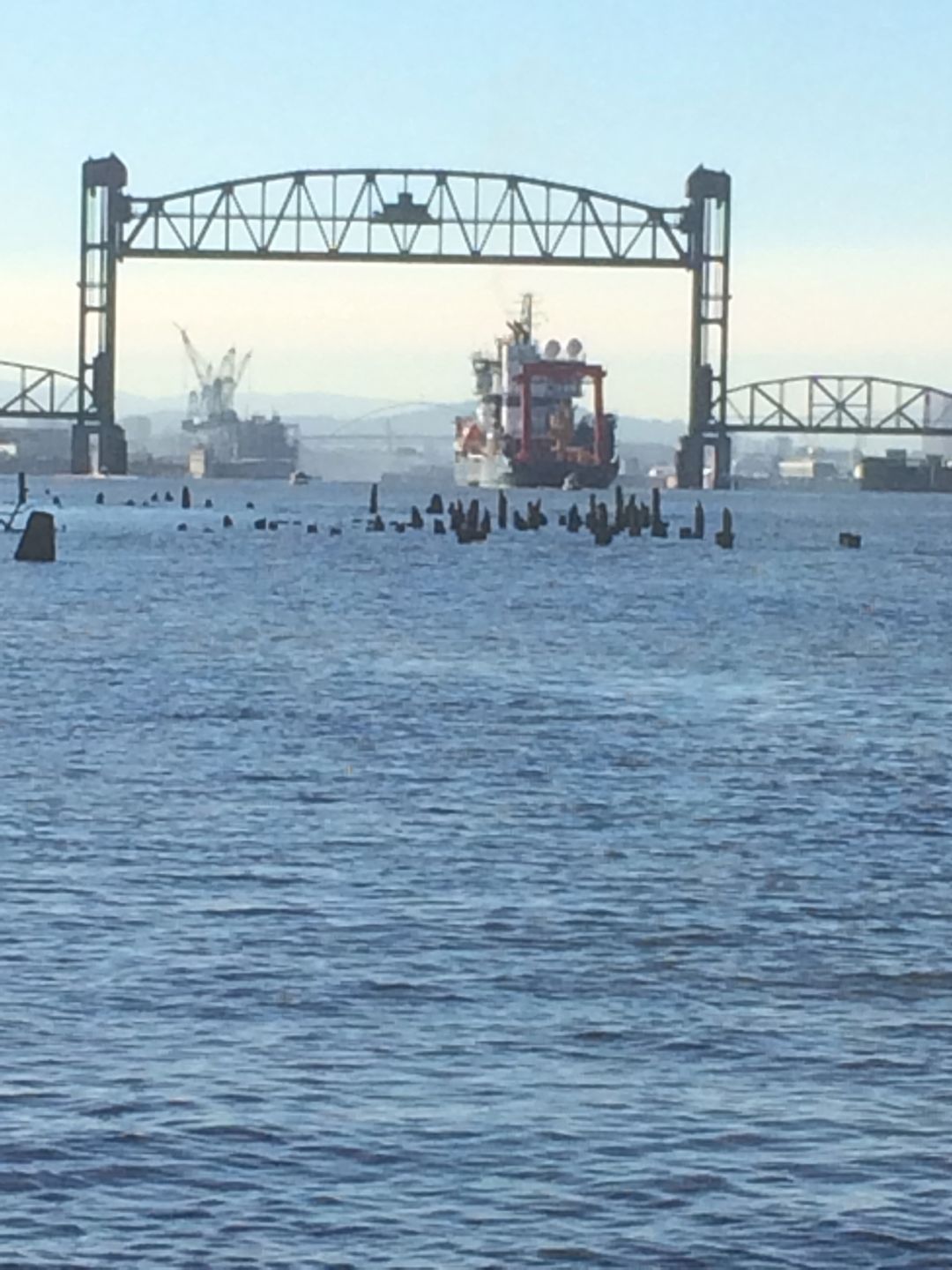
The Fennica turned around and headed back upriver shortly after 7:30 a.m. July 30, 2015.
Image: Margaret Seiler
“It was this perfect eternal moment where we were standing toe to toe with our opponent,” says Hirsty, the climber I helped anchor. “I’ll never forget the feeling I had when [the Fennica] turned around, and the cheers started coming up from the park and the water, and really feeling in that moment the feeling of ‘people power’ and speaking truth to power, in a way that I don’t think I had ever felt so tangibly before.”
The boat turning around wasn’t the end of the story, of course, and the campaign to protect the Arctic continues. When I caught up this month with some of the other participants in the #ShellNo protest, two years after I’d left my job at Greenpeace, we also talked about the large Black Lives Matter demonstrations happening today. A Portland protest is again in the national headlines. Once again, the police have been joined by federal personnel, after President Trump ordered law enforcement officers from multiple agencies under the Department of Homeland Security and the Department of Justice to Portland. Once again, Merkley put out a relatively forceful statement, and other Oregon politicians soon followed with more cautious responses.
After the turnaround, the law enforcement response began to markedly escalate. Officers took a more forceful tone with me and the other anchor supports: leave the bridge now or be arrested. Exhausted and desperately needing to use a bathroom (I’d been too shy to do anything but pee in the makeshift bucket-and-sheet restroom on the bridge, though a kindly couple who lived in St. Johns once ferried me to their bathroom), I was among those who decided to walk. A half dozen support staff remained on the bridge and were briefly detained and given fairly minor citations.
More first responders started showing up, including climbers who began interacting with our climbers’ ropes. As Hirsty recalls, “They set up a backup on Climber Three’s climb line, and took the weight off, so they could move them to a different system and then lower them down into the police boat.” After the other climbers saw one of their own forcibly removed, they started coming down of their own volition. Below, the kayaktivists were met by heavy resistance from a hodgepodge of local, state, and national government entities. As Sellers remembers, “Cops were zooming around on jet skis, assaulting and capturing people.” He says he was dragged onto “one of the boats that gave the Fennica its honor guard ride out of town.” At around 6 p.m. July 30, after being blocked for 40 hours, Shell’s icebreaker was able to pass under the St. Johns Bridge and set its course for the Chukchi Sea, days later than intended and nearly a month behind schedule.
It proved to be a pyrrhic victory for Shell. The multinational corporation had suffered incalculable damage to its public image and the window on the 2015 drilling season was rapidly closing. Finally, on September 28, 2015, following another lost summer, Shell announced it was abandoning its Arctic drilling program indefinitely. By the end of 2016, the Obama administration declared a moratorium on all offshore drilling in the US Arctic. In the end, Shell spent more than $7 billion without getting a single barrel of Arctic oil to market.
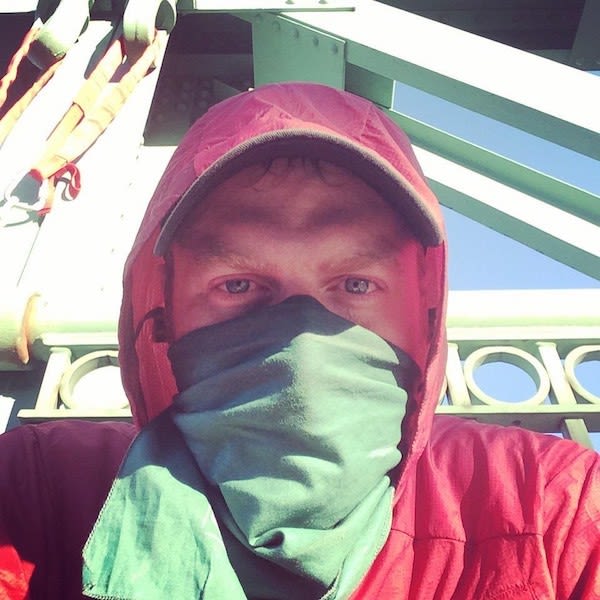
Image: Courtesy Steve Nichols
Steve Nichols is a freelance journalist and photographer who lives in Northeast Portland with his husband and two kittens. He worked for Greenpeace from 2012 to 2018. You can follow him on Instagram at @snichols.photo or on Twitter @SteveNarwhals.
